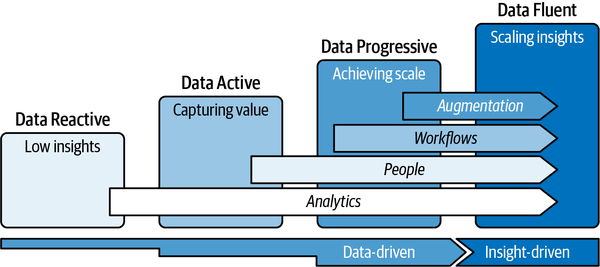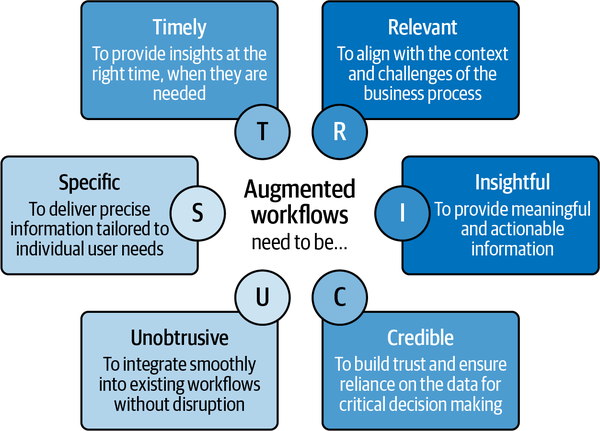Chapter 5. Augmented Workflows
You’ve learned a lot so far about the fundamentals of employee empowerment and the organizational environment required to implement AA successfully. Without executive ownership, ideas from analytics translators across the organization, a CoE driving the transformation, and an effective infrastructure to translate the ideas into use cases, there would be nothing to augment business users’ processes and workflows.
The whole transformation is an iterative approach, and AA is now becoming a key driver for the final phase. It’s a two-way relationship, as Figure 5-1 shows: there can be no AA without the right level of maturity in analytical transformation, and there can be no ultimate excellence without AA.

Figure 5-1. Augmentation as an enabler for data fluency
The final phase must now focus on enabling the majority of employees, the analytics users, to effectively participate in the benefits of analytics through the technical integration of analytics into their workflows. That’s what we’ll explain in more detail in this chapter.
Types of Workflow Augmentation
As Figure 5-2 shows, new workflows need to follow a rubric often called TRICUS: they should be timely, relevant, insightful, credible, unobtrusive, and specific.

Figure 5-2. Augmented workflow ...
Get Augmented Analytics now with the O’Reilly learning platform.
O’Reilly members experience books, live events, courses curated by job role, and more from O’Reilly and nearly 200 top publishers.

